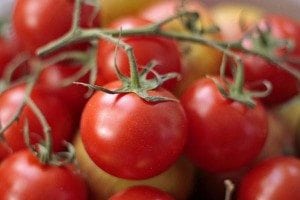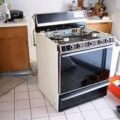Gardening can feed your family cheaper than buying produce at the supermarket. A few squash plants can feed an army, and so can a few tomato plants. However, the array of products pushed at would be gardeners is truly bewildering. It doesn’t have to be that way.
Photo courtesy of Free Web Photos
Essentials for Container Gardening
- Container – get one that measures one foot by one foot by two feet deep. That is a good size because it is big enough to keep the soil temperature relatively constant, give the plants room, especially for their roots, and you can still move it. You can put it on one of those stands with wheels if necessary to keep it mobile.
- Soil
- Fertilizer
- Water
- Plants or Seeds
- Sunlight – The sun exposure is not negotiable, vegetables do not product well with any less than six hours of sun a day.
Now that you have this big container, what do you put in it?
A mixture of 50/50 potting soil and compost works well. This keeps the soil loose and fertile. Be sure and wear a dust mask when pouring in the potting soil and compost into the pot — some people are susceptible to an airborne fungus sometimes found in such things.
Fertilizer
Fertilizers are not as complicated as they seem at first glance. All plants need nitrogen to grow. They also need phosphorus and potassium and a host of trace elements. Fertilizers replace what the plant takes out of the soil so it is there for the next plant. They also add nutrients to soil that doesn’t have what the plant needs. The needs of different plants differ. Tomatoes use one fertilizer, other plants use other ones. Just make sure that you read the label and only use a fertilizer if the vegetables you are growing are on it. Then follow the label directions and it will work.
Water
All plants need water, too. You want to keep the soil moist but not squishy.
Seeds
Seeds can come from many different places. The seeds at the supermarket or big box store are adequate for someone who just wants some fresh vegetables for their family. Nurseries and places such as Seed Savers Exchange have better quality seed, but it is somewhat more expensive. Buying seeds on sale at the end of one season to save for the next usually disappoints, however, as the germination rate is pretty low.
What can you grow in a square foot pot?
Square foot garden spacing:
- Large plants such as a tomato, squash or cucumber can grow one to a container. Trellis the vines up to save space.
- Medium plants such as lettuce can grow four to a container.
- Small plants such as beets and spinach can grow nine to a square.
- Very small plants such as onions and carrots can grow 16 to a square.
The founder of square foot gardening, Mel Bartholomew, claims a four by eight can feed a family of four for a year. I would not go that far, but it can significantly reduce your food costs after the initial purchase of supplies. In addition, SNAP (food stamps) can be used to purchase vegetable seeds and plants to grow food for your family. Studies have shown that children are more willing to eat vegetables they have grown, so this is also a way to develop good eating habits for your family.
~~~~~~~
Stephanie Suesan Smith, Ph.D. is a master gardener, writer, photographer, and woodworker. You can find more gardening information in her book, Preparing a Vegetable Garden From the Ground Up.




